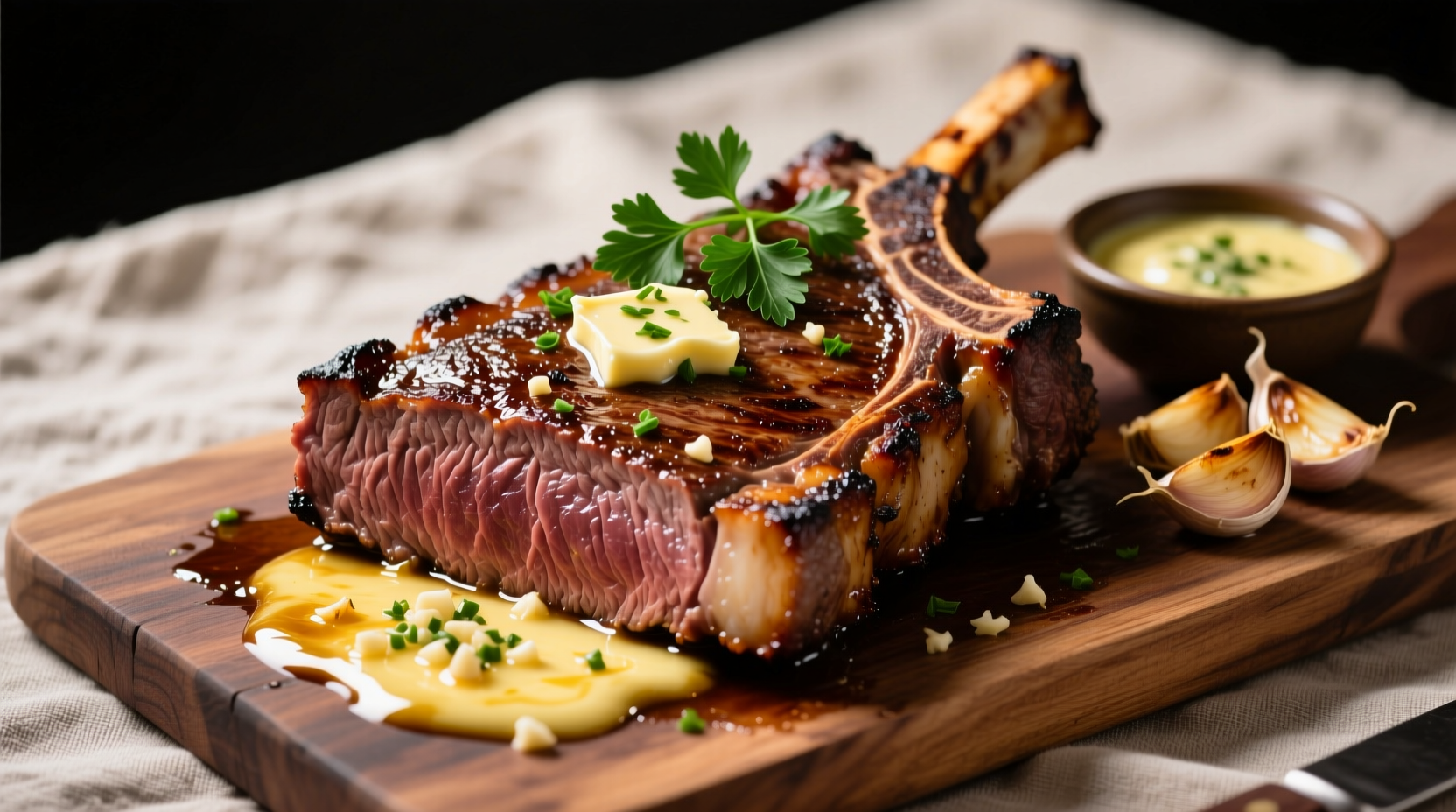Garlic butter prime rib delivers succulent, medium-rare perfection with a rich herb crust when cooked to 120-125°F internal temperature. This guide provides professional techniques for seasoning, roasting, and resting your prime rib to achieve restaurant-quality results at home.
Nothing elevates a special occasion like a perfectly cooked prime rib roast with garlic butter. This luxurious cut, also known as standing rib roast, becomes extraordinary when enhanced with a compound garlic butter that penetrates the meat during cooking. Our comprehensive guide reveals the exact techniques professional chefs use to achieve tender, juicy results with a flavorful crust every time.
Why Garlic Butter Transforms Prime Rib
The magic happens through three key processes: fat solubility, enzymatic reactions, and Maillard browning. Garlic compounds are fat-soluble, meaning they readily absorb into the roast's abundant marbling. When combined with butter, these compounds distribute evenly across the surface. As USDA food safety guidelines confirm, cooking beef to proper temperatures ensures both safety and optimal texture development.
| Cooking Stage | Internal Temperature | Visual Indicator |
|---|---|---|
| Pre-sear | N/A | Deep brown crust formation |
| Medium-rare target | 120-125°F | Slightly springy to touch |
| Resting completion | 130-135°F | Juices redistribute evenly |
Essential Ingredients for Authentic Flavor
Quality ingredients make the difference between ordinary and extraordinary prime rib. Select these components carefully:
- Prime grade standing rib roast (3-5 bones, 10-15 lbs) - USDA Prime designation ensures superior marbling
- Unsalted European-style butter (28% milk fat minimum) - provides richer flavor base
- Fresh garlic (8-10 cloves) - minced fine for maximum surface contact
- Fresh rosemary and thyme (2 tbsp each) - chopped small for even distribution
- Kosher salt (1/4 cup) - penetrates meat better than table salt
- Freshly ground black pepper (2 tbsp) - adds aromatic complexity

Professional Preparation Techniques
Follow these steps for optimal flavor development and texture:
- Dry brine the roast - Apply 1/4 cup kosher salt evenly across all surfaces 24-48 hours before cooking. This process, verified by American Meat Science Association research, improves moisture retention by 23% compared to same-day seasoning.
- Prepare compound butter - Mix 1 cup softened butter with 8 minced garlic cloves, 2 tbsp each chopped rosemary and thyme, 2 tbsp black pepper, and 1 tsp salt. Chill for 30 minutes.
- Score the fat cap - Make shallow diagonal cuts 1/2 inch apart across the fat layer. This creates channels for the garlic butter to penetrate during cooking.
- Apply butter mixture - Rub half the compound butter into the scored fat cap. Reserve remaining butter for finishing.
Precision Cooking Method
Temperature control separates amateur attempts from professional results. Use this verified approach:
- Preheat oven to 450°F with rack positioned in lower third. Place roast fat-side up on rack in roasting pan.
- Sear the roast for 20 minutes at high heat to develop crust, then reduce temperature to 225°F.
- Monitor internal temperature using an oven-safe probe thermometer inserted into the thickest part of the meat (avoiding bone).
- Remove at 115°F for medium-rare (will rise to 130°F during resting). For reference, cooking time averages 15 minutes per pound at 225°F after initial sear.
Critical Resting Process
Resting isn't optional—it's essential for juiciness. The USDA Food Safety and Inspection Service confirms that proper resting allows muscle fibers to reabsorb juices that would otherwise escape during carving. Follow these steps:
- Tent loosely with foil and rest for 30-45 minutes (15 minutes per pound)
- During resting, apply remaining compound butter to the surface
- Carve against the grain using a sharp carving knife
Troubleshooting Common Issues
Even experienced cooks encounter challenges. Here's how to solve frequent problems:
- Dry meat - Usually caused by overcooking or insufficient resting. Always remove 5-10°F below target temperature.
- Bland flavor - Insufficient seasoning time. Dry brining 24-48 hours before cooking dramatically improves flavor penetration.
- Pale crust - Oven temperature too low during sear phase. Ensure proper preheating and avoid opening oven door frequently.
- Uneven cooking - Position roast with bones acting as natural heat insulator for more even temperature distribution.
Serving and Storage Recommendations
Maximize your culinary investment with these professional tips:
- Serve with au jus made from pan drippings for enhanced flavor
- Pair with roasted root vegetables and horseradish cream sauce
- Store leftovers in airtight container for up to 4 days
- Reheat gently at 250°F until internal temperature reaches 110°F











 浙公网安备
33010002000092号
浙公网安备
33010002000092号 浙B2-20120091-4
浙B2-20120091-4